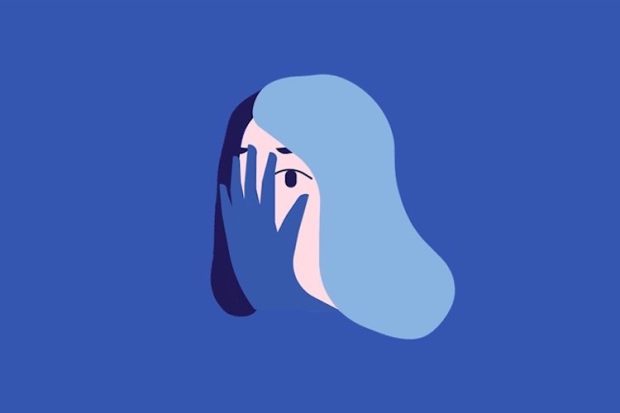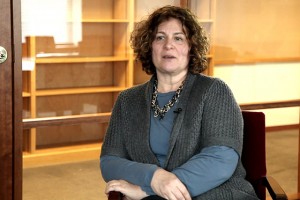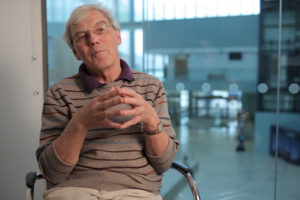Cognitive Advantages of Bilingualism
Harvard Prof. Maria Polinsky on introducing two languages, the importance of literacy and advantages of biling...
The video is a part of the project British Scientists produced in collaboration between Serious Science and the British Council.
The problem how we understand other people has always been a very complicated one and even in very simple situations if we see another person pick up a cup of tea or we see them make a particular symbol with their hands, then we are often able to understand without even thinking about it what is it they are doing and what is that thet mean. In the last two decades there has been enormous amount of research on this area to try and uncover what are the mechanisms in the brain that let us understand other people’s behavior in very simple ways. There has been a very influential discovery of things called mirror neurons, that was made nearly twenty years ago by neuroscientists working in Italy, Parma, they were studying macaque monkeys as the monkeys move and pick up a peanut. They found that there were individual neurons in the premotor cortex of the monkey which would respond not only when the monkey picks up a peanut, but also when the monkey sees a person pick up a peanut. So these individual neurons, the basic units of the brain, are linking together the actions you see and the actions that you do yourself and this was named “mirror neurons”. It has been an influential discovery because of the first time it gave people a handle on the idea there could be some very basic mechanism in the motor system of the monkey that actually allows you to do something social and link the things that you see up to the actions that you do yourself. This was discovered twenty years ago, but there is still a lot of controversy about how they work and what they do and how important they really are to our social lives.
Mirror neurons are found mainly in two areas of the brain: in the premotor cortex and also in the parietal cortex. There is a variety of different ways of classifying them: some of them are very selective, they would only respond if the monkey picks up a peanut and also when its watches the person picks up a peanut. Others are much more general and will respond to the variety of actions so it has been quite controversial as to what the mechanism is and how precise this matching needs to be in order to be socially useful.
The other question has been a very big controversy in the area of mirror neurons is the question of where do they come from in terms of evolution, have we evolved to have mirror neurons and this could be a change from millions of years ago and they got better and better. Are they are driven by evolution to allow us to interact with other people or the Rival theory, is that actually this is something that we learn throughout our lives that when babies are born, they do not have any mirror neurons, but when they see actions and when they do actions then they make connections between the images they see in front of them and the actual movements of their hand and by making those connections they create mirror neurons. Over the last years has been increasing evidence that we create mirror neurons through performing actions and through observing our own actions and actions of other people. A baby who is four months old we will spend about 40% of its waking time looking at its own hand because it is really learning and working very hard to learn those connections between the image that you see if you took a photograph of your hand and the movements that you make when you send signals to your muscles to move your hand. We think that those kind of connections are part of setting up mirror neurons. At the moment we are doing some studies with some collaborators to look at babies and we can now record brain activity in babies while they are learning these things and try to see these systems come online as babies develop.
We know that macaque monkeys have a small number of mirror neurons, but the kind of methods that we use to look at whether or not you have got mirror neurons, which is either recording inside the brain of doing MRI scans are methods that we cannot do with apes or chimpanzees because they tend not to like sitting in MRI scans. We do not know what is the answer, we think it is very likely and especially if you take the view that these neurons are learnt, then they would have ample opportunity to learn this, but we do not have any definitive evidence of it yet.
We think that mirror neurons are very important in terms of helping us understand sort of a basic mechanisms of social interaction and if we have got those basic building blocks, we can then understand how people would build on those for more complex interactions. There are also something that turns out to be very important in motor disorders, in people who have a stroke. A stroke can affect your ability to forms actions, if the stroke affects motor cortex, but also to understand actions. It turns out, there may be some differences in terms of this between healthy people and people people with Parkinson’s disease, who have difficulties performing movements. This idea that the actions that you can perform help you understand other people’s actions is something that seems to be very fundamental. There are some very interesting studies showing that if you learn a new motor skill that changes your brain, that changes your mirror neuron system and gives you a much greater understanding of other people performing that kind of skill. For example, we take people who have never done modern dance before and train them up over a course of five weeks to do a particular kind of modern dance and scan them every week to see how their brain changes. We find that then as they learn the dance they also show different patterns and more patterns of brain activation in the mirror neuron system as they are able to understand in much more detail and in a much greater fashion the kind of dance they are seeing when another person is performing modern dance. The mirror neuron system is really giving us sort of key insights into basic mechanisms of visual motor learning and how people acquire new skills and then use those skills in a social way to make sense of other people.
The main question in the field of mirror neuron research for the future is to understand how does this system relate to other brain systems, how does information from the mirror neuron system feed into other brain systems that allow us to infer social things about who is nice or who to interact with and other kinds of social relationships, and, similarly, to understand the relationship between mirror neurons and emotion processing, because when emotions appear in the face sometimes we use our own face to copy the emotions that we see, and we do not know yet how much that contributed to let us understand if we have mirror neurons for facial emotions and if these are the same principles that we are using in the mirror neuron system that also let us have an emotional connection with other people. Then, how the whole puzzle fits together into the broader idea of social brain.

So one of the key questions that came up when we first started studying mirror neurons was the question of what is it that these neurons actually care about and there is a very interesting feature when you are trying to understand actions and make sense of actions that an action can be understood on many different levels, so if you saw a person reaching out to a tree to pick an apple then you can understand, that actually you can be represented in your mind in terms of the goal of the action to take an apple from the tree, but you can also think about the shape of a hand without caring what the object is you would have the same shape of the hand to grasp an apple or to grasp a tennis ball or something else. It is a very important question to know: does the brain care about hand shapes or does it care about the object itself that you are taking the apple or a tennis ball, but because these things are intrinsically linked it becomes very hard in terms of the methods to separate them out every time you show a person a picture or a movie of a person grasping an apple.
We spent some time devising experiments that would let us separate these things out, we showed that if you show people the same movie twice in a row then for the second one you get slightly less brain activation, something called “repetition suppression”. It means that the thing you are seeing has become predictable, so if you see the same hand shape twice in a row the hand shape for grasping an apple, then the brain activation will be suppressed if that particular region of the brain encodes the shape of the hand. But if you saw the same hand shape grasping an apple and in the next time the same hand shape is grasping a tennis ball, then because we are taking different object the brain activation would not be suppressed, but only if the brain actually cares what the identity of the object is. We were able to use this method in an MRI scanner with brain imaging to show that there are some areas in your brain that really care about the shape of your hand, whereas there are other areas of the brain that care what the object is that you are grasping. Making these kinds of more detailed distinctions is important, because it would give us a much better interpretation of what is happening, for example, in people you had a stroke or have some brain damage that affects one of these brain areas and not the other. But also on a more philosophical level, it is showing that these different concepts we have about things in the everyday world, like grasping a particular kind of an object, really are encoded in particular brain regions and we can distinguish within the brain between these different ideas about the goal of an action or the way an action has been performed, which philosophers might have talked about, but we could not before sort of see the psychological reality of these kind of concepts and see how they work in the brain. We think that there are probably mirror neurons that deals with both of these different levels and you have to integrate the system together in order to have a whole understanding of what another person’s action is and what he is going to do with it.

Harvard Prof. Maria Polinsky on introducing two languages, the importance of literacy and advantages of biling...

Molecular Biologist Richard Henderson on blobology, 2D crystals, and the resolution revolution

New eLife paper explains how artificially generated human muscle cells will help develop novel treatments